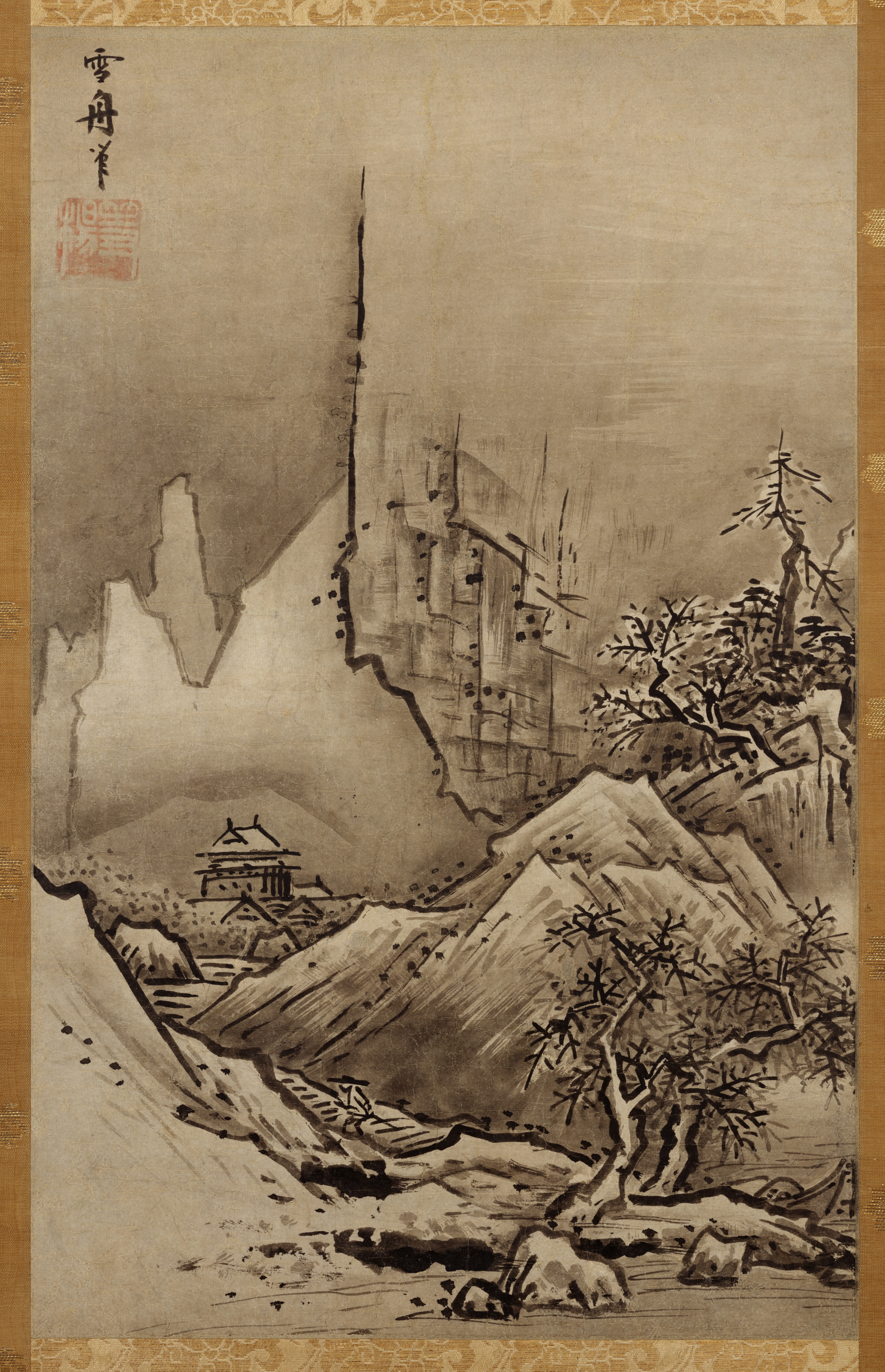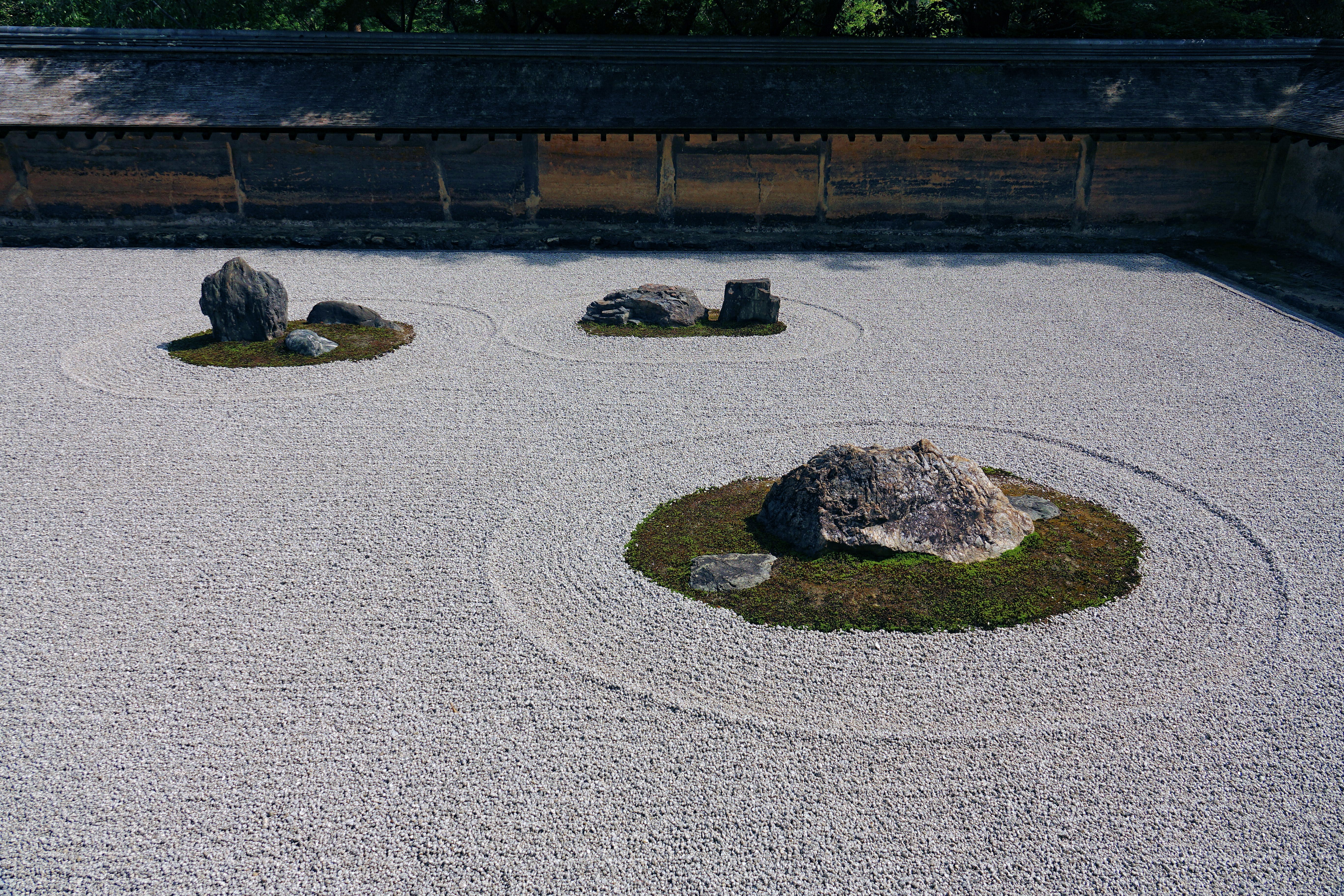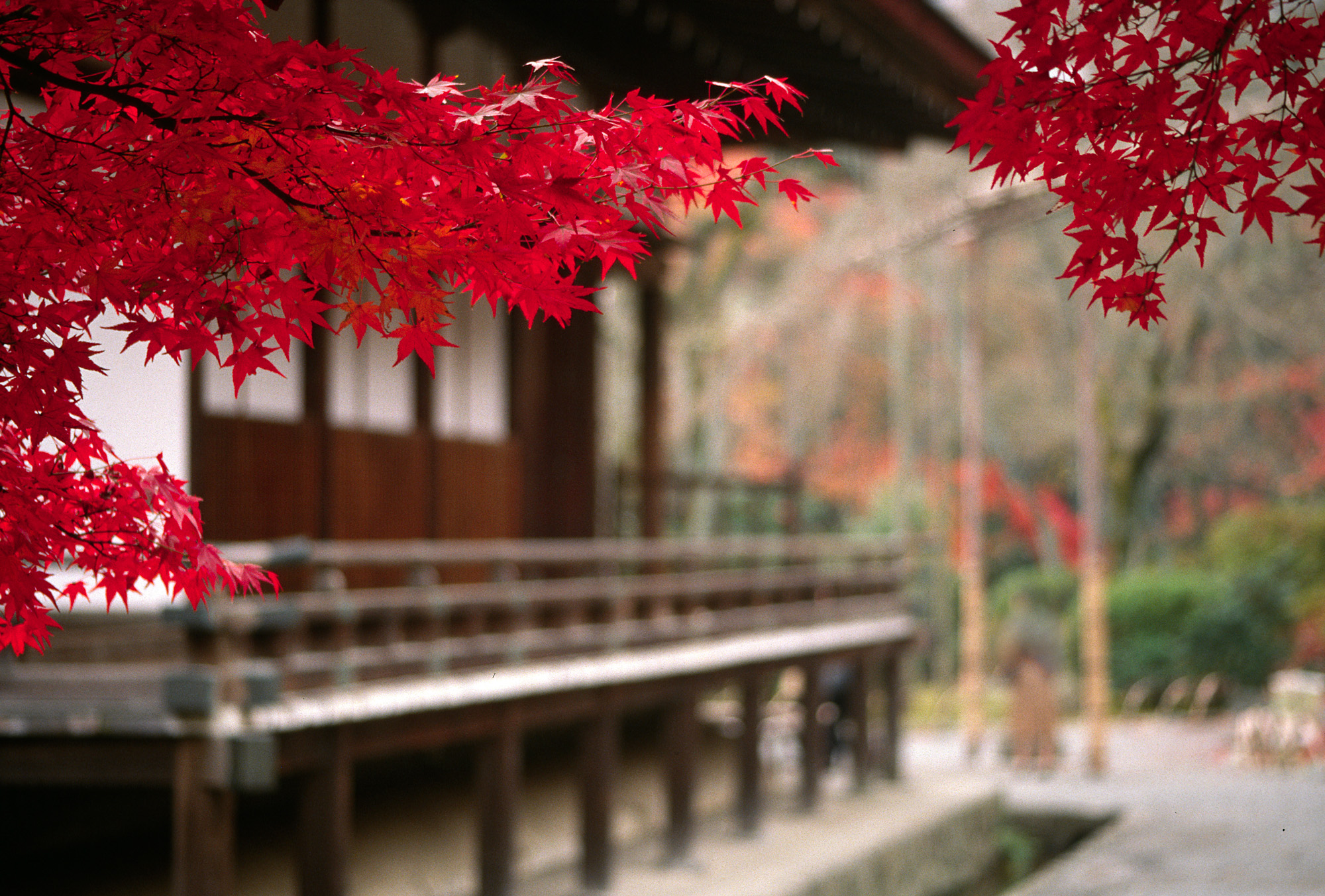|
Japanese Dry Garden
The or Japanese rock garden, often called a zen garden, is a distinctive style of Japanese garden. It creates a miniature stylized landscape through carefully composed arrangements of rocks, water features, moss, pruned trees and bushes, and uses gravel or sand that is raked to represent ripples in water. Zen gardens are commonly found at temples or monasteries. A zen garden is usually relatively small, surrounded by a wall or buildings, and is usually meant to be seen while seated from a single viewpoint outside the garden, such as the porch of the ''hojo'', the residence of the chief monk of the temple or monastery. Many, with gravel rather than grass, are only stepped into for maintenance. Classical zen gardens were created at temples of Zen Buddhism in Kyoto during the Muromachi period. They were intended to imitate the essence of nature, not its actual appearance, and to serve as an aid for meditation. History Early Japanese rock gardens Stone gardens existed in Japan at ... [...More Info...] [...Related Items...] OR: [Wikipedia] [Google] [Baidu] |
Shoin
is a type of audience hall in Japanese architecture that was developed during the Muromachi period. The term originally meant a study and a place for lectures on the sūtra within a temple, but later it came to mean just a drawing room or study.Iwanami Japanese dictionary, 6th Edition (2008), DVD version From this room takes its name the '' shoin-zukuri'' style. In a shoin-zukuri building, the ''shoin'' is the ''zashiki'', a tatami-room dedicated to the reception of guests. The emerging architecture of the Muromachi period was subsequently influenced by the increasing use and appearance of ''shoin''. One of the most noticeable changes in architecture to arise from the ''shoin'' came from the practice of lining their floors with tatami mats. Since ''tatami'' mats have a standardized size the floor plans for ''shoin'' rooms had to be developed around the proportions of the ''tatami'' mat; this in turn affected the proportions of doors, the height of rooms, and other aspects ... [...More Info...] [...Related Items...] OR: [Wikipedia] [Google] [Baidu] |
Ōtomo Sōrin
, also known as Fujiwara no Yoshishige (藤原 義鎮) and Ōtomo Yoshishige (大友 義鎮), was a Japanese feudal lord (''daimyō'') of the Ōtomo clan, one of the few to have converted to Roman Catholicism (Christianity). The eldest son of , he inherited the Funai Domain, on Kyūshū, Japan's southernmost main island, from his father. He is perhaps most significant for having appealed to Toyotomi Hideyoshi to intervene in Kyūshū against the Shimazu clan, thus spurring Hideyoshi's Kyūshū Campaign of 1587. Early life In 1545, Sōrin married Lady Nata (Jezebel) who became one of the leading personalities against the spread of Christianity in western Japan. she was the daughter of Nata Akimoto, the head priest of the Nata Hachiman Shrine. Sōrin's domain included the port of Funai, which was frequented by Jesuit priests, bandits, Chinese merchants, and Japanese sea lords. In addition to unifying much of Kyūshū under his control, and securing a significant gain in his clan' ... [...More Info...] [...Related Items...] OR: [Wikipedia] [Google] [Baidu] |
Sesshū Tōyō
(c. 1420 – 26 August 1506) has been regarded as one of the greatest painters in Japanese history. Sesshū was a Zen-Shu priest painter of the Muromachi period in Japan, prominently recognised for his art of sumi-e (black ink painting). Initially inspired by Chinese landscapes, Sesshū's work holds a distinctively Japanese style that reflects Zen Buddhist aesthetics. His prominent work captured images of landscapes, portraits, and birds and flowers paintings, infused with Zen Buddhist beliefs, flattened perspective, and emphatic lines. Sesshū was born into the samurai and trained at Shōkoku-ji temple in Kyoto, Japan, as a Zen monk. From his early childhood, Sesshū showed a talent for painting and eventually became widely revered throughout Japan as a wise, reputable Zen scholar, and the greatest painter priest of Zen-Shu. Sesshū worked in a painting atelier whilst training under Tenshō Shūbun (c. 1418–1463). But upon visiting China, his work betook a distinctive Chi ... [...More Info...] [...Related Items...] OR: [Wikipedia] [Google] [Baidu] |
Daisen-in
The is a sub-temple of Daitoku-ji, a temple of the Rinzai school of Zen in Buddhism, one of the five most important Zen temples of Kyoto. The name means "The Academy of the Great Immortals." Daisen-in was founded by the Zen priest , and was built between 1509 and 1513. The Daisen-in is noted for its screen paintings and for its , or dry landscape garden. The screen paintings inside the temple and the garden are attributed to Sōami ( 1525), a Zen monk, ink painter and follower of the sect of the Amida Buddha. He was particularly known for his use of diluted ink to create delicate and nuanced, misty and ethereal landscapes. His work was influenced by the ink landscape paintings of the Song Dynasty in China. According to art historian Miyeko Murase, the work of Soami represents "the very essence of the serenity of nature, the sacred ideal of all the zen monks and ink painters of the Muromachi period". Rock garden Despite later interpretations on the creation of the Daisen-in' ... [...More Info...] [...Related Items...] OR: [Wikipedia] [Google] [Baidu] |
Ryōan-ji
Ryōan-ji ( ja, 竜安寺, label=Shinjitai, ja, 龍安寺, label=Kyūjitai, ''The Temple of the Dragon at Peace'') is a Zen temple located in northwest Kyoto, Japan. It belongs to the Myōshin-ji school of the Rinzai branch of Zen Buddhism. The Ryōan-ji garden is considered one of the finest surviving examples of '' kare-sansui'' ("dry landscape"), a refined type of Japanese Zen temple garden design generally featuring distinctive larger rock formations arranged amidst a sweep of smooth pebbles (small, carefully selected polished river rocks) raked into linear patterns that facilitate meditation. The temple and its gardens are listed as one of the Historic Monuments of Ancient Kyoto, and as a UNESCO World Heritage Site. History The site of the temple was an estate of the Fujiwara clan in the 11th century. The first temple, the ''Daiju-in'', and the still existing large pond were built in that century by Fujiwara Saneyoshi. In 1450, Hosokawa Katsumoto, another powerful warl ... [...More Info...] [...Related Items...] OR: [Wikipedia] [Google] [Baidu] |
Mount Fuji
, or Fugaku, located on the island of Honshū, is the highest mountain in Japan, with a summit elevation of . It is the second-highest volcano located on an island in Asia (after Mount Kerinci on the island of Sumatra), and seventh-highest peak of an island on Earth. Mount Fuji is an active stratovolcano that last erupted from 1707 to 1708. The mountain is located about southwest of Tokyo and is visible from there on clear days. Mount Fuji's exceptionally symmetrical cone, which is covered in snow for about five months of the year, is commonly used as a cultural icon of Japan and it is frequently depicted in art and photography, as well as visited by sightseers and climbers. Mount Fuji is one of Japan's along with Mount Tate and Mount Haku. It is a Special Place of Scenic Beauty and one of Japan's Historic Sites. [...More Info...] [...Related Items...] OR: [Wikipedia] [Google] [Baidu] |
Ginkaku-ji
__NOTOC__ , officially named , is a Zen temple in the Sakyo ward of Kyoto, Japan. It is one of the constructions that represents the Higashiyama Culture of the Muromachi period. History Ashikaga Yoshimasa initiated plans for creating a retirement villa and gardens as early as 1460; After his death, Yoshimasa would arrange for this property to become a Zen temple. the villa and gardens became a Buddhist temple complex, renamed Jishō-ji after Yoshimasa's Buddhist name. After extensive restoration, started February 2008, Ginkaku-ji is again in full glory to visit. The garden and temple complex are open to the public. There is still no silver foil used. After much discussion, it was decided to not refinish the lacquer to the original state . The lacquer finish was the source of the original silver appearance of the temple, with the reflection of silver water of the pond on the lacquer finish. Garden In addition to the temple's famous building, the property features wooded g ... [...More Info...] [...Related Items...] OR: [Wikipedia] [Google] [Baidu] |
Tenryū-ji
, formally known as , is the head temple of the Tenryū-ji branch of the Rinzai sect of Zen Buddhism, located in Susukinobaba-chō, Ukyō Ward, Kyoto, Japan. The temple was founded by Ashikaga Takauji in 1339, primarily to venerate Gautama Buddha, and its first chief priest was Musō Soseki. Construction was completed in 1345. As a temple related to both the Ashikaga family and Emperor Go-Daigo, the temple is held in high esteem, and is ranked number one among Kyoto's so-called Five Mountains. In 1994, it was registered as a UNESCO World Heritage Site, as part of the " Historic Monuments of Ancient Kyoto". History In the early Heian period, Empress Tachibana no Kachiko, wife of Emperor Saga, founded a temple called Danrin-ji on the site of present-day Tenryū-ji. The temple fell into disrepair over the next four hundred years. In the mid-thirteenth century, Emperor Go-Saga and his son Emperor Kameyama turned the area into an imperial villa which they called . The ... [...More Info...] [...Related Items...] OR: [Wikipedia] [Google] [Baidu] |
Musō Soseki
was a Rinzai Zen Buddhist monk and teacher, and a calligraphist, poet and garden designer. The most famous monk of his time, he is also known as ("national Zen teacher"), an honorific conferred on him by Emperor Go-Daigo.''Musō Soseki'', Kyoto University His mother was the daughter of Hōjō Masamura (1264-1268), seventh Shikken (regent) of the Kamakura shogunate. Biography Originally from Ise Province, now part of modern-day Mie Prefecture, Soseki was a ninth-generation descendant of Emperor Uda.Papinot (1972:602) At the age of four he lost his mother and was therefore put in the temple of Hirashioyama under the guidance of priest Kūa. He entered a mountain temple in 1283, where he studied the Shingon and Tendai sects of Buddhism. In 1292 he took his vows at Tōdai-ji in Nara, and was given the name Chikaku. In 1293 he dreamed that, while visiting two temples in China called in Japanese and he was given a portrait of Daruma Daishi (the introductor of Chan Bu ... [...More Info...] [...Related Items...] OR: [Wikipedia] [Google] [Baidu] |






